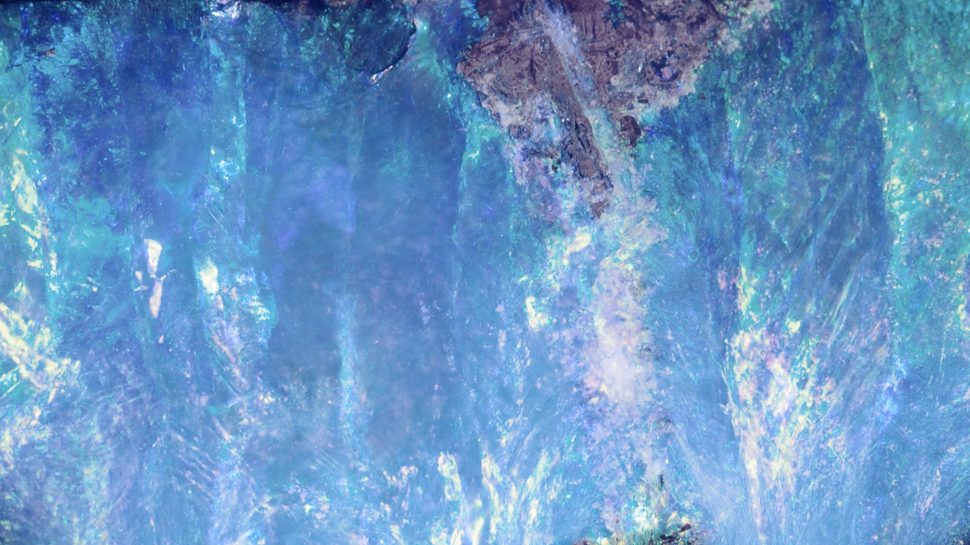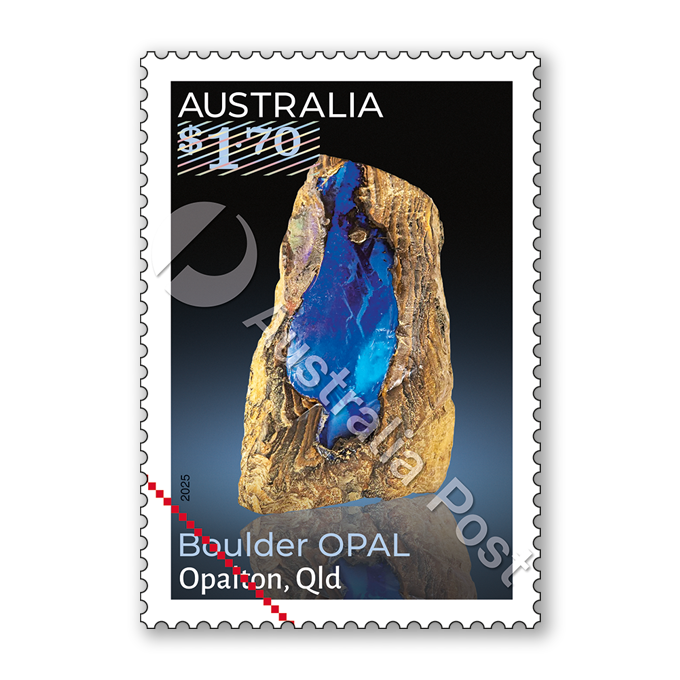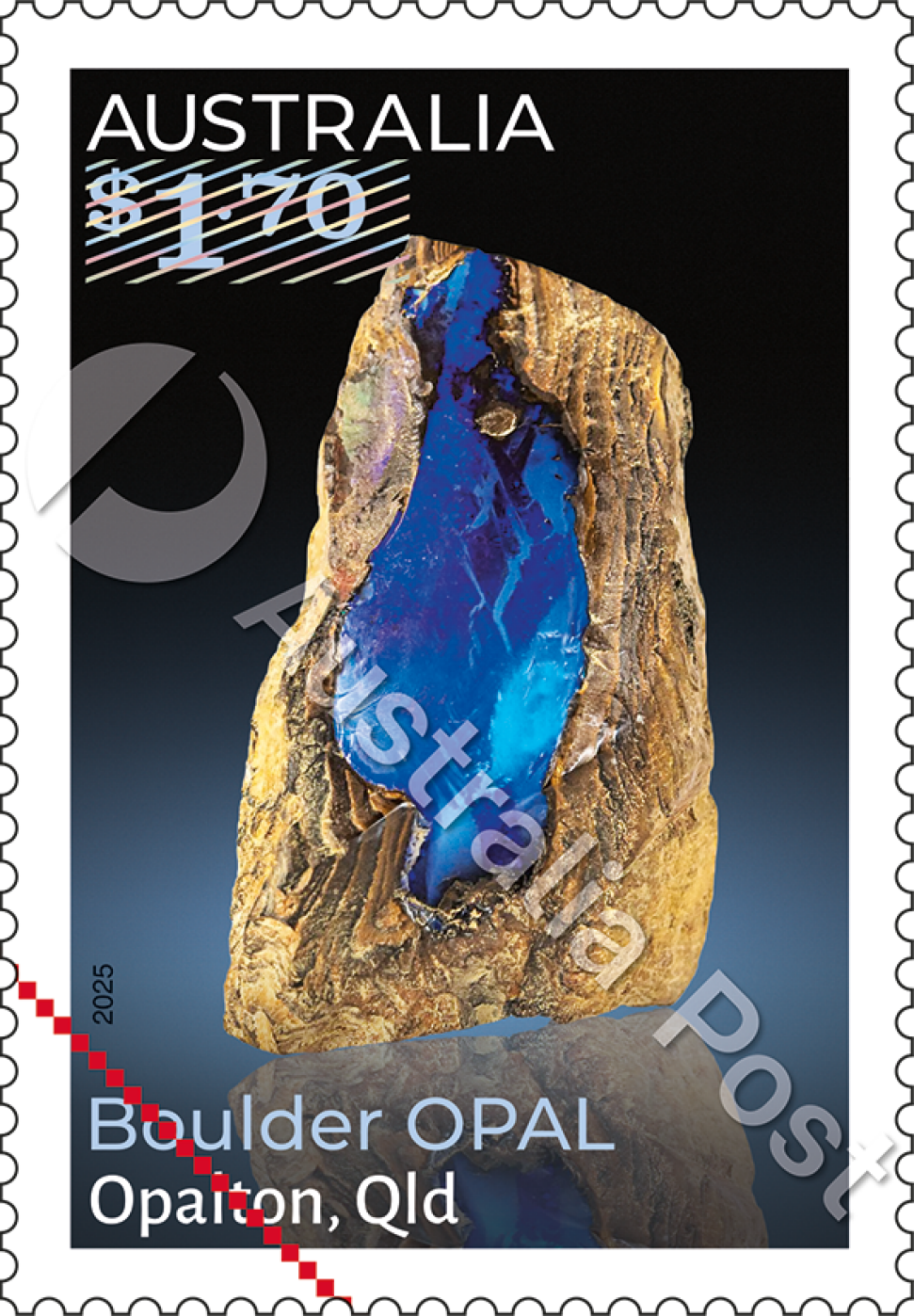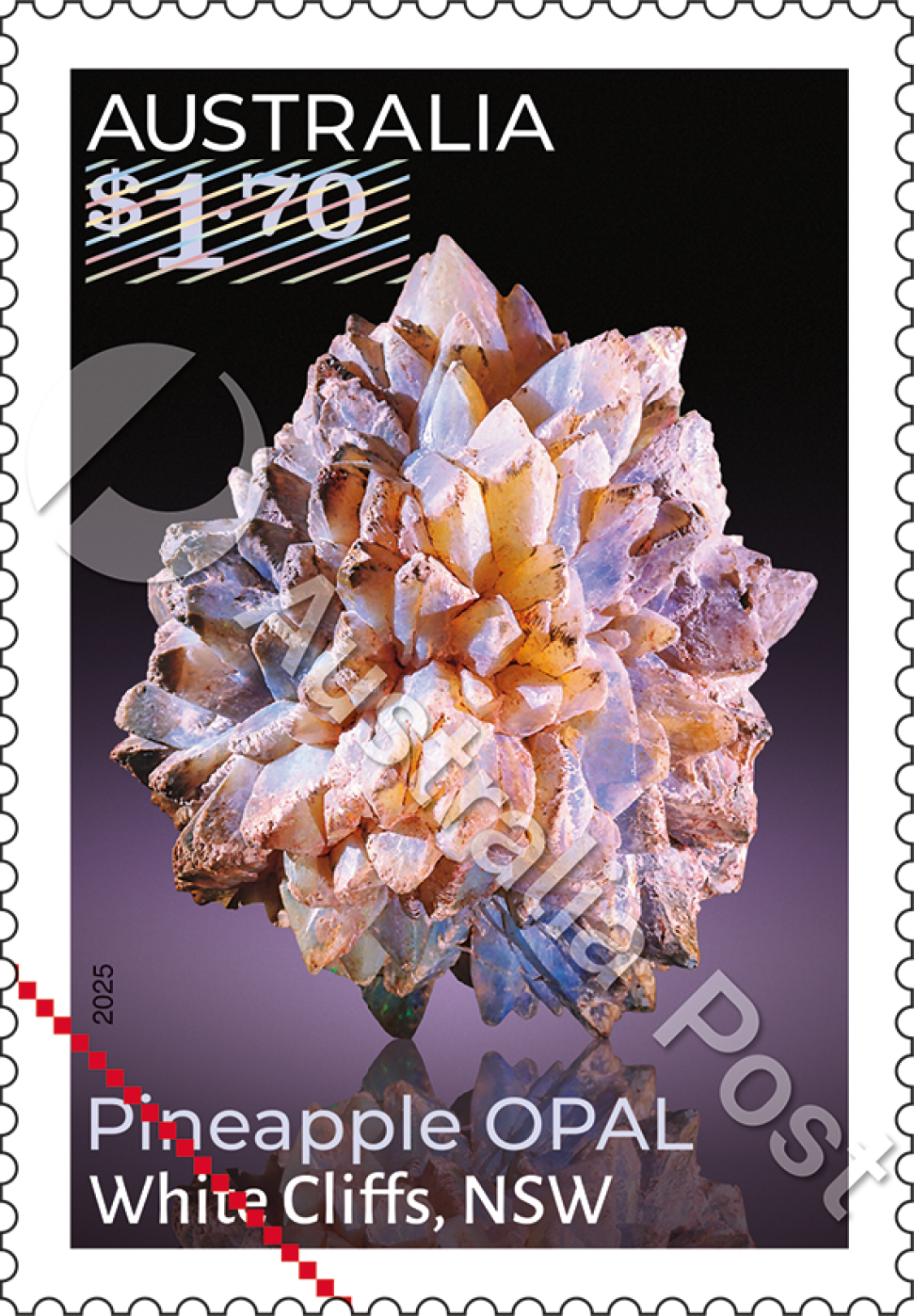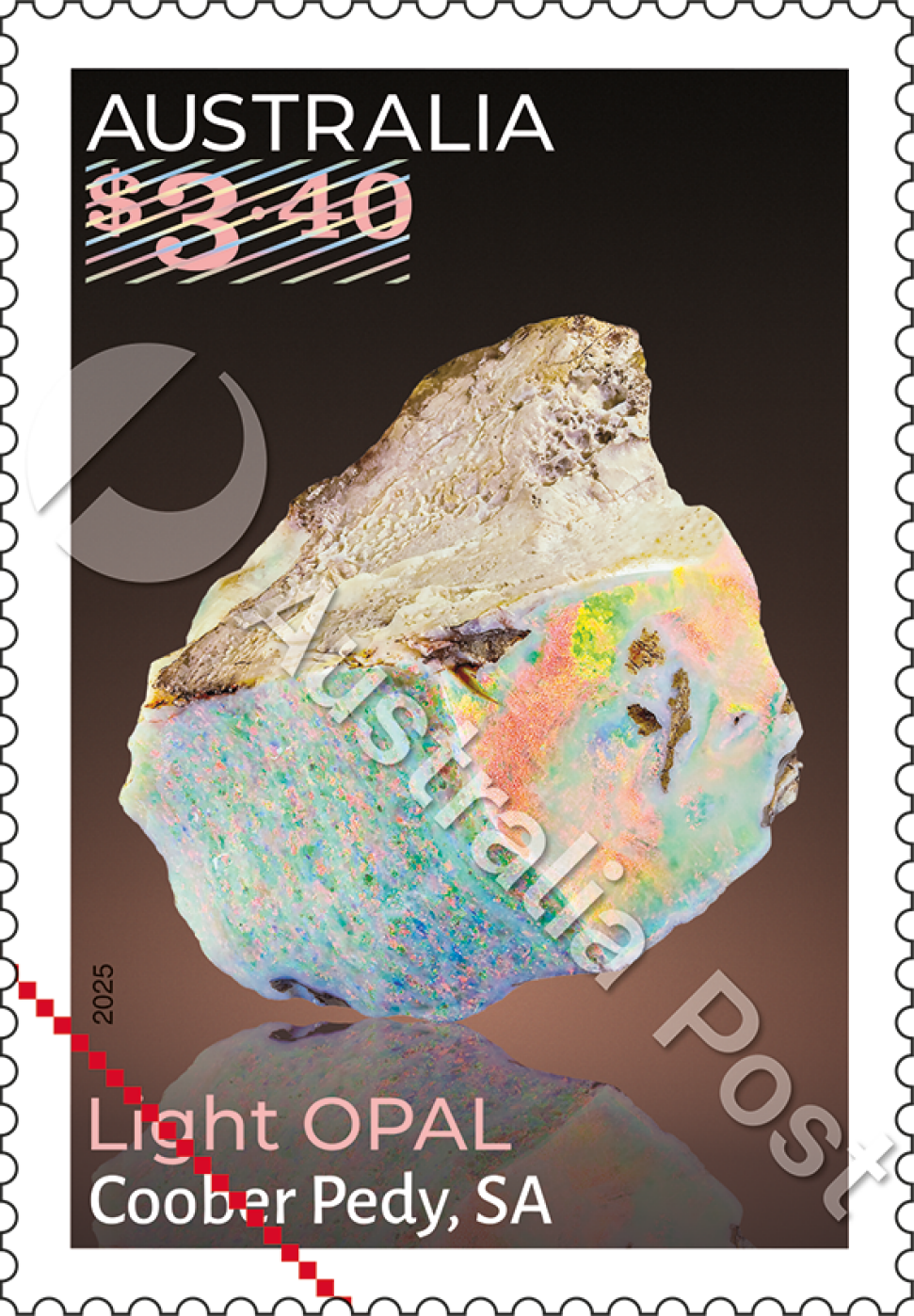Overview
The opal is Australia’s national gemstone, and today the vast majority of the world’s precious opals are sourced here. These beautiful gems are unique for their remarkable play of colour, produced by the diffraction and interference of light by the microscopic spheres of silica that form the structure of the opal.
The formation of Australian opals began tens of millions of years ago, when much of central Australia was a vast, shallow inland sea. Fine sands rich in the compound silica were deposited along its shorelines. As the sea receded, the Great Artesian Basin was formed below ground and today’s deserts were slowly created. Through millions of years of weathering, a silica-rich solution seeped along faults and joints in the earth, filling in cracks and voids. This gel eventually hardened to form opal. Sometimes fossil remains such as dinosaur bones, shells and plants were replaced with opal, their shapes still apparent.
The opals depicted in this series of stamps show the wide range of opal types found in Australia. They originated in various important opal-mining sites of Queensland, South Australia and New South Wales, and are now among the treasures of museum collections across the country.
Technical specifications
- Issue date
- 17 July 2025
- Issue withdrawal date
- TBA
- Denomination
- 2 × $1.70, 1 × $3.40
- Stamp & product design
- Sharon Rodziewicz, Australia Post Design Studio
- Paper: gummed
- Tullis Russell 104gsm Red Phosphor/Blue PVA Stamp Paper
- Printer: gummed
- RA
- Printing process
- Offset lithography
- Stamp size (mm)
- 26 x 37.5
- Minisheet size (mm)
- 170 x 80
- Perforations
- 14.6 x 13.86
- Sheet layout
- Module of 50 (2 x 25)
- FDI postmark
- Andamooka SA 5722
- FDI withdrawal date
- 15 August 2025
$1.70 (domestic)
Boulder Opal from Opalton, Queensland
Opal mining at Opalton began in the 1890s. The town is renowned for boulder opal: thin seams or patches of precious opal surrounded by its natural host rock. The Boulder Opal featured is from the Brisbane Opal Museum, photographed by Valentine McDonald.
$3.40 (domestic)
Light Opal from Coober Pedy, South Australia
The famous ‘Fire of Australia’ is widely regarded as the finest piece of Light Opal ‘rough’ in existence, being large in size and exhibiting all colours of the spectrum in different patterns. It was mined in 1946 and acquired by the South Australian Museum in Adelaide in 2017. The photograph is by Denis Smith.
